Discover 20 hidden attractions, cool sights, and unusual things to do in Mysore (India). Don't miss out on these must-see attractions: Mysore Palace, Mysore Zoo, and Devaraja Market. Also, be sure to include Chamundeshwari Temple in your itinerary.
Below, you can find the list of the most amazing places you should visit in Mysore (Karnataka).
Table of Contents
Mysore Palace
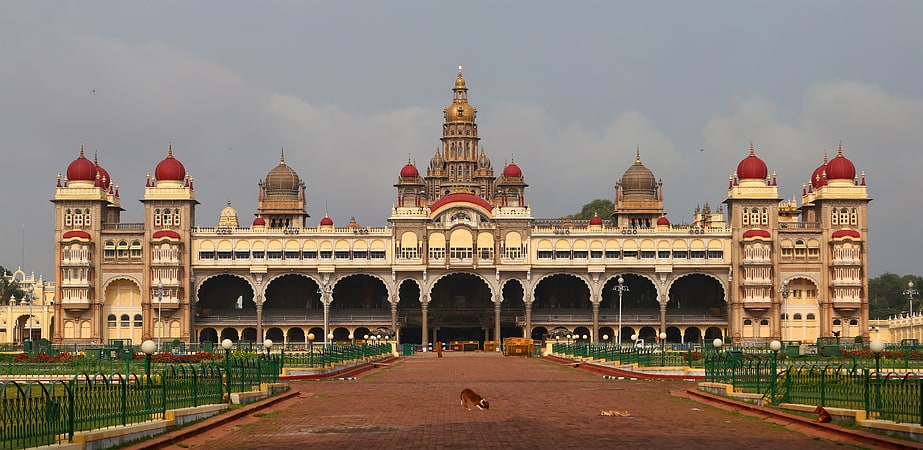
Also known as: अम्बा विलास महल
Indo-Saracenic architecture with lights. The Mysore Palace, also known as Amba Vilas Palace, is a historical palace and a royal residence. It is located in Mysore, Karnataka. It used to be the official residence of the Wadiyar dynasty and the seat of the Kingdom of Mysore. The palace is in the centre of Mysore, and faces the Chamundi Hills eastward. Mysore is commonly described as the 'City of Palaces', and there are seven palaces including this one. However, the Mysore Palace refers specifically to the one within the Old Fort.
The land on which the palace now stands was originally known as mysuru (literally, "citadel"). Yaduraya built the first palace inside the Old Fort in the 14th century, which was set ablaze and reconstructed multiple times. The Old Fort was built of wood and thus easily caught fire, while the current fort was built of stone, bricks and wood. The current structure was constructed between 1897 and 1912, after the Old Palace burnt down, the current structure is also known as the New Fort. Mysore Palace is one of the most famous tourist attractions in India, after the Taj Mahal, with more than six million annual visitors.[1]
Address: Sayyaji Rao Rd, 570001 Mysore
Mysore Zoo
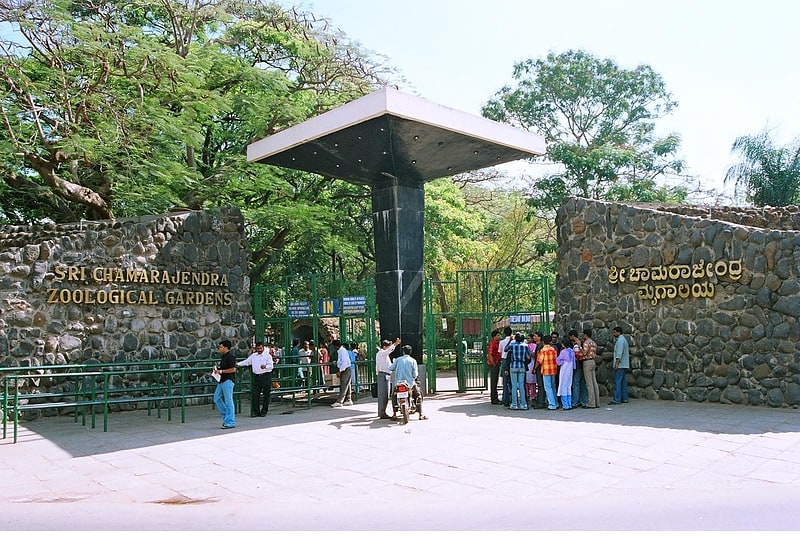
Expansive place with exotic animals. Mysore Zoo is a 157-acre zoo located near the palace in Mysore, India. It is one of the oldest and most popular zoos in India, and is home to a wide range of species. Mysore Zoo is one of the city's most popular attractions.
While mainly depending on entry fees for its financing, an adoption scheme introduced in the early 2000s has been a success. Celebrities, institutions, animal lovers and volunteers of various clubs in the zoo have contributed directly to the welfare of the zoo inhabitants.[2]
Address: Sri Chamarajendra Zoological Gardens, Zoo Main Road Indiranagar, Mysore
Devaraja Market

Devaraja Market is a market located in Mysuru. One can buy flowers, fruits, and choose from conical piles of colorful Kumkum powder. Spices, sandalwood products, silk saris, essential oils, and incense are also available for purchase. The market is on Sayaji Rao Road. In 2017, there were 1,122 shops in the market employing over 3,000 people and receiving 8,000 to 10,000 visitors each day. It is a tourist attraction, and a popular place to take photos.
The market was constructed in 1886. It was initially a weekly market. The market was built above the Dewan Poornaiah Canal that supplied drinking water to Mysore Palace. It was named in 1925 after Dodda Devaraja Wadeyar. It is also known as Dodda market.
Its area spans 3.67 acres. The market is bounded by a structure with wooden rafters and stone masonry walls that faces the street on all four sides. The north gate is on Devantri Road. The market is bounded by Sayaji Rao Road on the east side. The south gate faces Dufferin Clock Tower. Inside the market, there are open areas where vendors can sell their wares. The inner shops are arranged along three aisles that go through the entire market.
Throughout the years, Devaraja Market has also seen fires and other disasters. 150 shops were destroyed by fire in 1981, 175 in 1990, and 30 in 1999. In August 2016, the north entrance gate collapsed due to structural weakness. There have been discussions about demolishing the market due to the state of disrepair.[3]
Chamundeshwari Temple
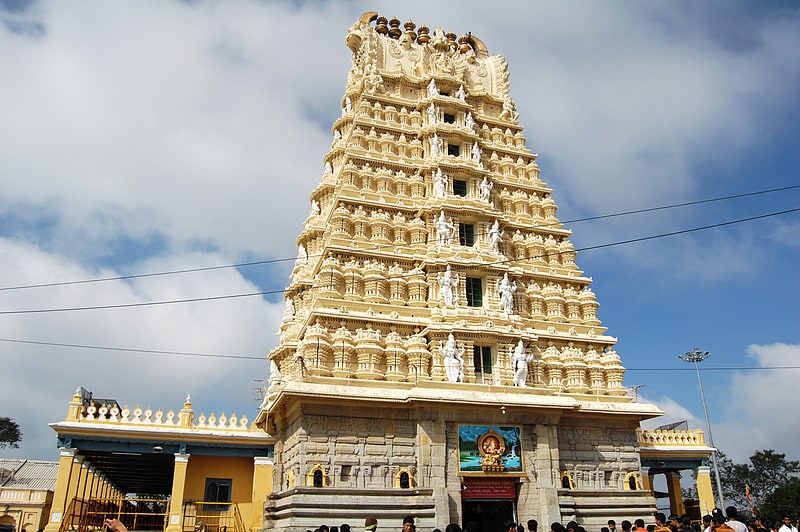
Also known as: चामुण्डेश्वरी मंदिर
Landmark Hindu temple with scenic views. The Chamundeshwari Temple is a Hindu temple located on the top of Chamundi Hills about 13 km from the palace city of Mysuru in the state of Karnataka in India. The temple was named after Chamundeshwari or, the fierce form of Shakti, a tutelary deity held in reverence for centuries by the Maharaja of Mysuru.
Chamundeshwari is called by the people of Karnataka as Naada Devi (ನಾಡ ದೇವಿ), which means state Goddess. It is situated at the elevation of around 3300 ft from the mean sea level.
It is believed that Goddess Durga slayed the demon king Mahishasura on the top of this hill which was ruled by him. The place was later known as Mahishooru (Place of Mahisha). The British changed it to Mysore and later Kannadized into Mysuru.[4]
Kukkarahalli lake
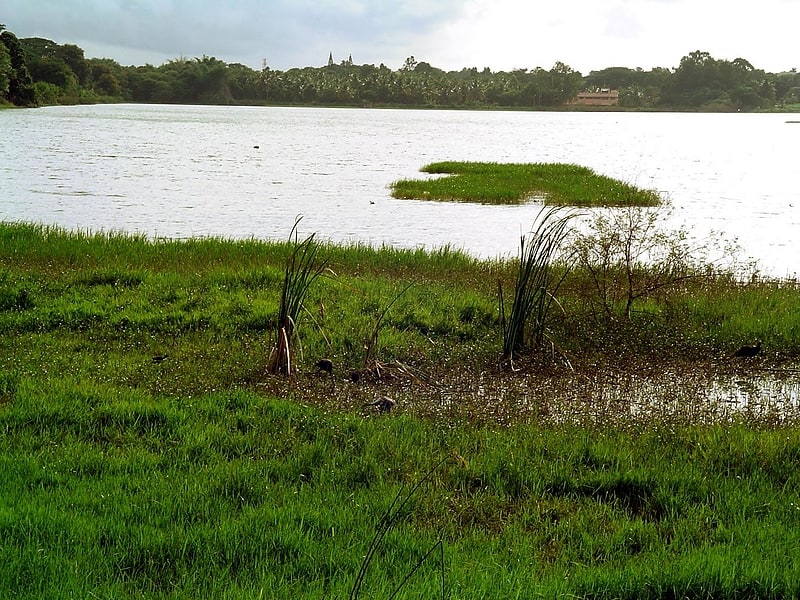
Lake in India. Kukkarahalli Lake also called Kukkarhalli Kere, located in the heart of the Mysore city, adjoins the Manasgangotri, the Kalamandir and the Central Food Technological Research Institute campus. It provides lung-space to the city. Mummadi Krishnaraja Wodeyar, of the Mysore Dynasty was responsible for getting the lake created, in the year 1864, to provide water for irrigation to about 4000 ha of land outside the city. The Lake also used to be a source of water supply to the city of Mysore but over the years, sewage and excessive land encroachments and blockage of water flow sources almost led to the eutrophication of the lake. The University of Mysore and the citizen forums of Mysore continue to make efforts to preserve the lake by implementing several remedial measures. There is a 4.5 km walkway on the periphery of the lake with shaded stone benches for visitors to sit, relax and enjoy the scenic serenity of the lake.[5]
Chamundi Hills
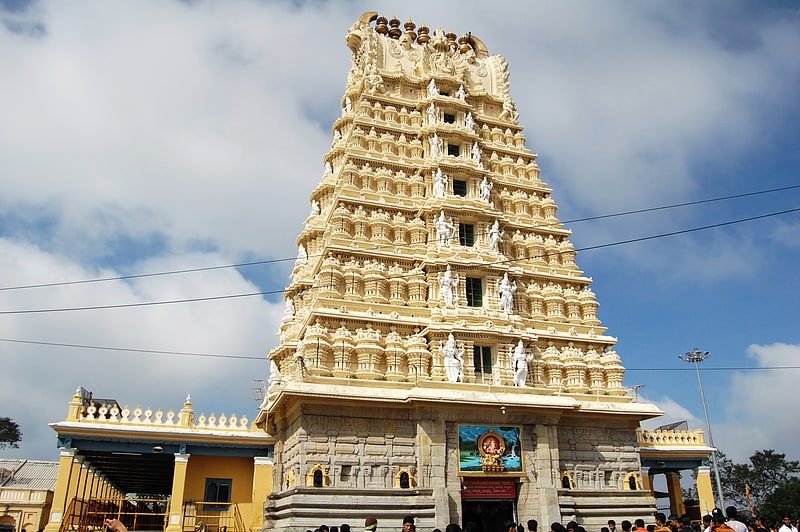
Also known as: चामुंडि पर्वत
The Chamundi Hills are located 13 km east of Mysore, Karnataka, India. The name comes from the Chamundeshwari Temple at the peak. The average elevation is 1,060 metres.[6]
Sand Sculpture Museum

Museum. Mysore Sand Sculpture Museum is the first sand sculpture museum in India, located in Mysore, Karnataka. It was inaugurated in 2014, with 150 sand sculptures on display, on a one-acre land at the base of Chamundi Hills. Each of the sculptures was created by sand artist MN Gowri and based on a theme such as Mysore's cultural heritage, wildlife and religion.[7]
Address: KC Layout, 570010 Mysuru
Jaganmohan Palace
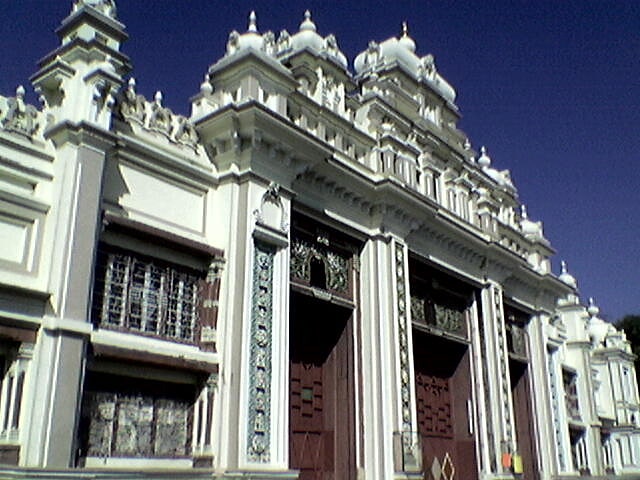
Palace in Mysore, India. Jaganmohan Palace is a palace in the city of Mysore, India. Its construction was completed in 1861 and was initially used by the Wodeyars, kings of Mysore as their home. It is now used as an art gallery and a function hall. The palace is one of the seven palaces of the royal city of Mysore.[8]
Address: devraj mohalla, Deshika Road, Chamrajpura, 570024 Mysuru
Karanji Kere
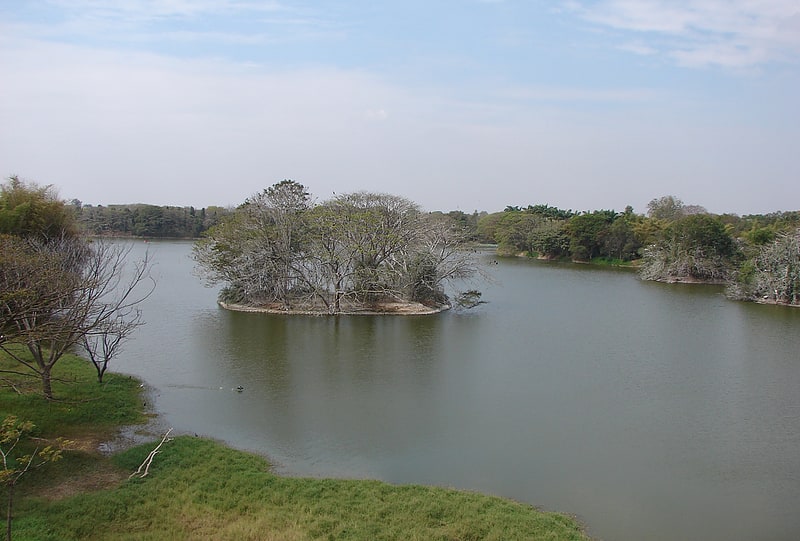
Lake in India. Karanji Lake is a lake located in the city of Mysore in the state of Karnataka, India. The lake is surrounded by a nature park consisting of a butterfly park and a walk-through aviary. This aviary is the biggest 'walk-through aviary' in India. There is also a museum, the Regional Museum of Natural History which is located on the banks of this lake. The total area of Karanji lake is 90 hectares. While waterspread area is about 55 hectares, the foreshore area measures about 35 hectares. Karanji lake is owned by the Mysore Zoo Authority. Mysore Zoo gets a revenue of an average of Rs. 50000 per day from ticket sales to enthusiasts who visit this lake.[9]
Parakala Mutt
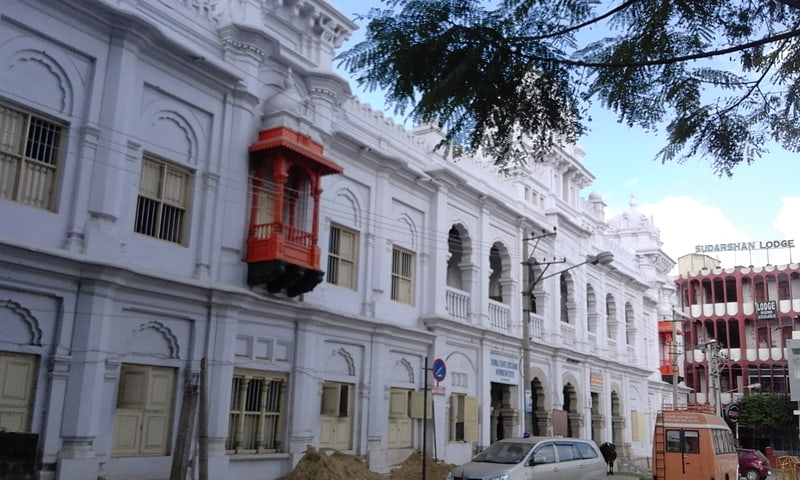
The Bramhatantra Swatantra Parakala Matha is a Vaishnava monastery established in Karnataka. It was the first medieval era monastery of the Vadakalai denomination within Vaishnavism tradition of Hindu society. Sri Sri Sri Brahmatantra Swatantra Parakala Matha was first established by Sri Sri Sri Brahmatantra Swatantra Jeeyar, a disciple of Sri Vedanta Desika Swamin.
In Vaishnavism, the term "Parakala" is used for Lord Vishnu and his avatar Narasimha, which means he who is beyond time. Sri Tirumangai Alvar, an alvar saint got Parakala as a title for his scholarship. So, the matha came to be known as Parakala Matha. The Matha has its headquarters in Mysore. The Matha has had a close relationship with the monarchs of Mysore Kingdom since 1399, which is why the Mysore Palace is housed just next to the Matha. The kings of Mysore hold the Matha as their official gurukul. Even now, the royal lineage has a close relationship with the Matha. All royal ceremonies are even today monitored by the Matha.
Parakala Matha is among the organizations that follow Sri Vedanta Desika as the torch bearer of Sri Ramanuja's teachings. The others are Ahobila Matha, Sri Srirangam Andavan Ashramam and Sri Poundarikapuram Andavan Ashramam.
There have been 36 seers (heads) so far. The head of this Matha is the hereditary Acharya of the Mysore Royal Family. The Hayagriva idol worshiped here is said to be handed down from Vedanta Desika.[10]
St. Philomena's Cathedral
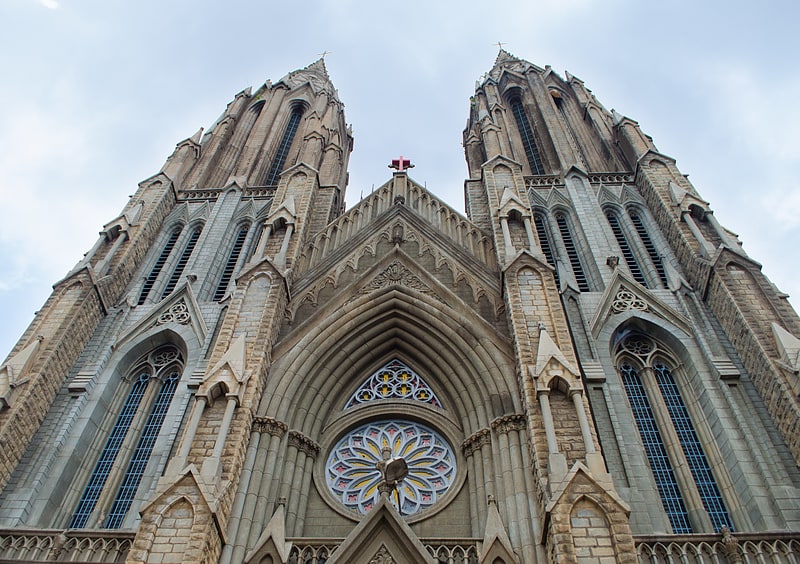
Imposing cathedral in Neo-Gothic style. St. Philomena’s Cathedral is a Catholic church that is the cathedral of the Diocese of Mysore, India. The full name is the Cathedral of St. Joseph and St. Philomena. It is also known as St. Joseph's Cathedral. It was constructed in 1936 using a Neo Gothic style and its architecture was inspired by the Cologne Cathedral in Germany. This is one of the tallest churches in Asia.[11]
Address: Ashoka Road, Lashkar Mohalla, 570001 Mysuru
C V Rangacharlu Memorial Hall

The Rangacharlu Memorial Hall, now known as Mysore Town Hall, or simply the Town Hall, was constructed in 1884 in memory of Diwan Sir C. V. Rungacharlu, the first diwan of Mysore post-restoration of monarchy in the Kingdom of Mysore in 1881.
The construction was sponsored by Maharaja Chamarajendra Wadiyar X. Rangacharlu's successor Diwan Sir K. Sheshadri Iyer was the building's chief engineer and planner.[12]
Railway Museum Mysore
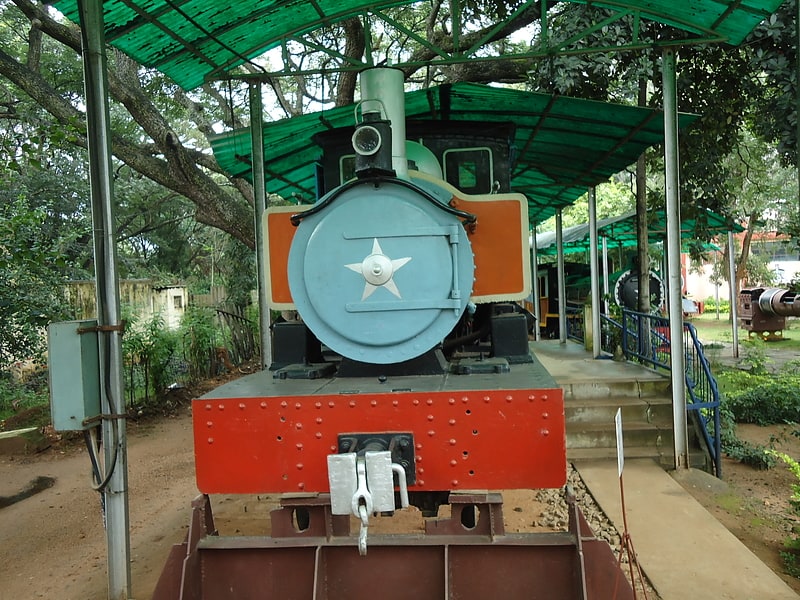
Museum in Mysore, India. The Railway Museum at Mysore, India is an outdoor exhibit of vintage locomotives.
The Railway Museum was established in 1979 by Indian Railways, the second such museum after the National Railway Museum in Delhi. The museum is opposite the Central Food Technology and Research Institute on Krishnaraja Sagar Road. It has locomotives and a gallery of photographs and paintings depicting the growth of railways in India. Railway signals and lights are also displayed. The museum has a battery-operated mini-train giving a short ride for children on the grounds.[13]
Address: Krishnaraja Sagar Road, Mysore
All India Institute of Speech and Hearing
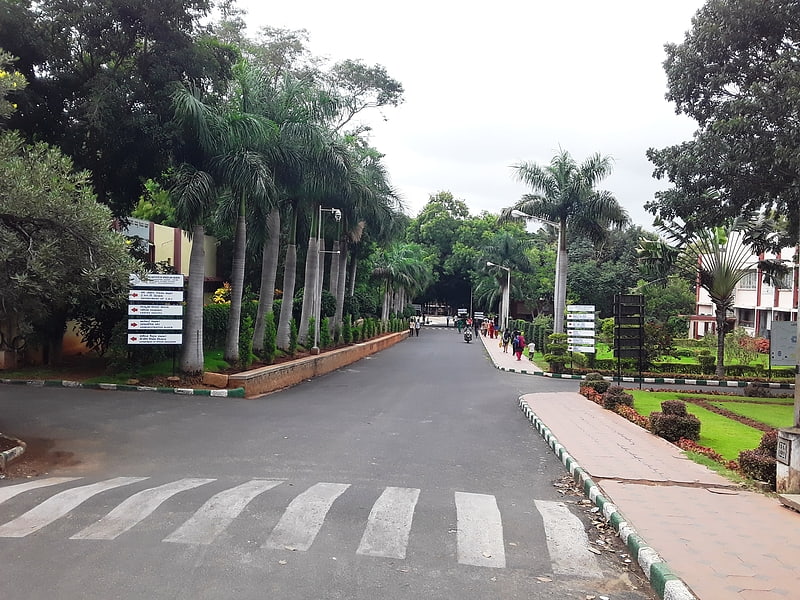
The All India Institute of Speech and Hearing, commonly known as AIISH, is located in Manasagangotri, Mysore, India. It is an autonomous institute under the Ministry of Health and Family Welfare. The institute was established in 1966 with a focus on training professionals for speech and hearing sciences.[14]
Oriental Research Institute Mysore

Also known as: प्राच्य अनुसन्धान संस्थान मैसूर
Research institute in Mysore, India. Formerly known as the Oriental Library, the Oriental Research Institute at Mysore, India, is a research institute which collects, exhibits, edits, and publishes rare manuscripts written in various scripts like Devanagari, Brahmic, Nandinagari, Grantha, Malayalam, Tigalari, etc.
The Oriental Library was started in 1891 under the patronage of Maharaja Chamarajendra Wadiyar X. It is located at the northern end of Krishnaraja Boulevard (adjacently opposite to Mysore University's Crawford Hall), in the architecturally attractive Jubilee Hall built in 1887 to commemorate the golden jubilee of Queen Victoria's accession to the British throne. It was a part of the Department of Education until 1916, in which year it became part of the newly established University of Mysore. The Oriental Library was renamed as the Oriental Research Institute in 1943.[15]
Chittaranjan Palace
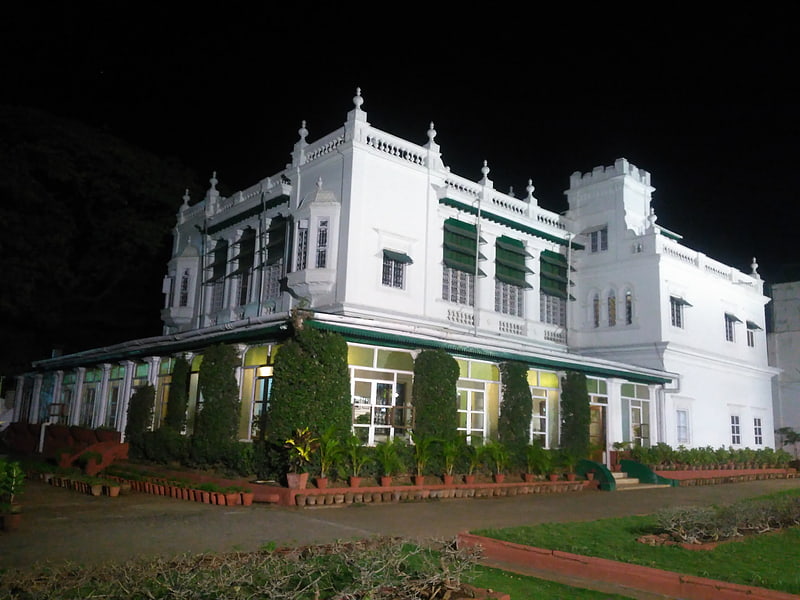
Chittaranjan Palace is a lesser-known palace at Mysore that was originally built for a princess of the Mysore royal family. It presently houses the "Green Hotel". It is a small hotel with 31 rooms and is eco-friendly. The profits from the hotel are given to charity.[16]
Brindavan Gardens
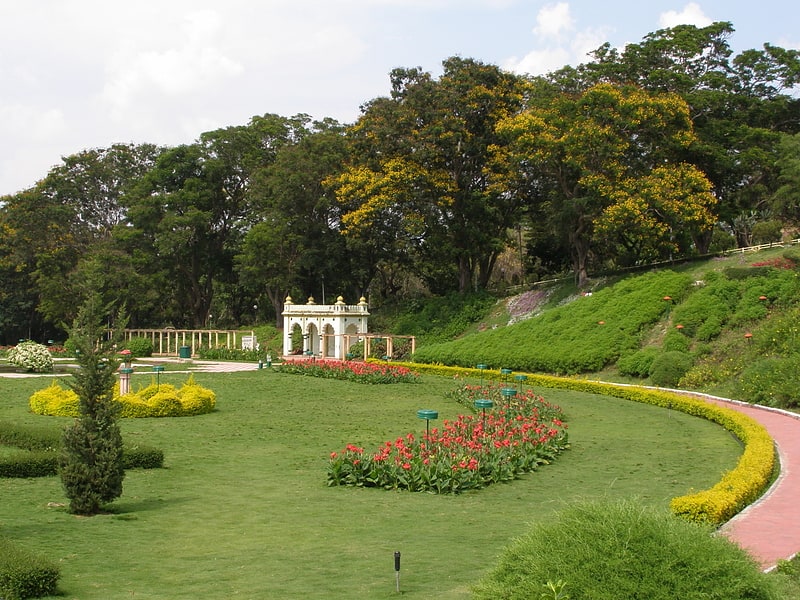
Also known as: वृंदावन उद्यान
Garden in India. The Brindavan Gardens is a garden located 12 k.ms from the city of Mysore in the Mandya District of the Indian State of Karnataka. It lies adjoining the Krishnarajasagara Dam which is built across the river Kaveri. The work on laying out this garden was started in the year 1927 and completed in 1932. Visited by close to 2 million tourists per year, the garden is one of the major attractions of Srirangapatna. Sir Mirza Ismail, the Deewan of Mysore, a man with a penchant for gardens, founded the Brindavan Gardens and built the Cauvery River high-level canal to irrigate 120,000 acres in modern Mandya district. He was inspired by Hyder Ali who had earlier built the Lalbagh Botanical Gardens at Bangalore.[17]
Cheluvamba Mansion
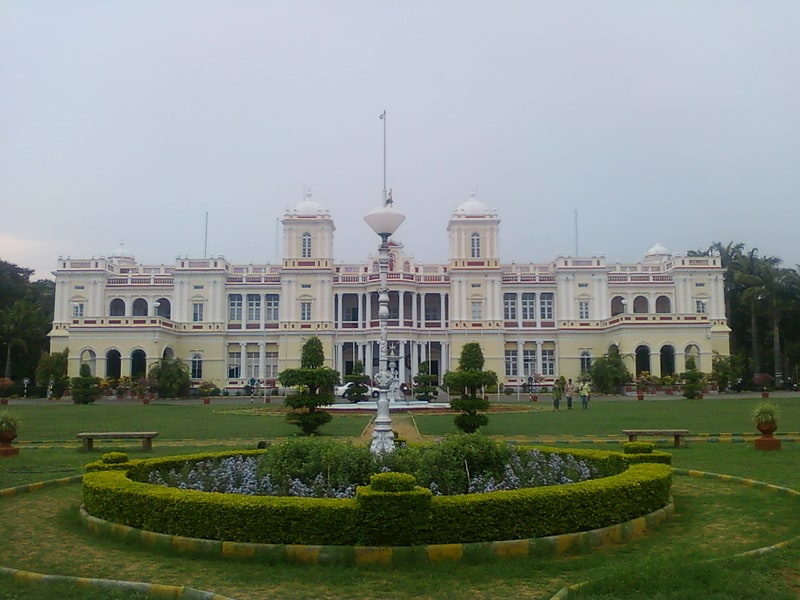
Cheluvamba Mansion is located in the city of Mysore, Karnataka. It was built by Maharaja Krishnaraja Wodeyar IV for the third princess of Mysore - Cheluvajammanni and it is similar to other mansions built by them which are spread over a large area surrounded by gardens. This mansion is crafted like other buildings of the Wadiyar dynasty.[18]
Regional Museum of Natural History Mysore
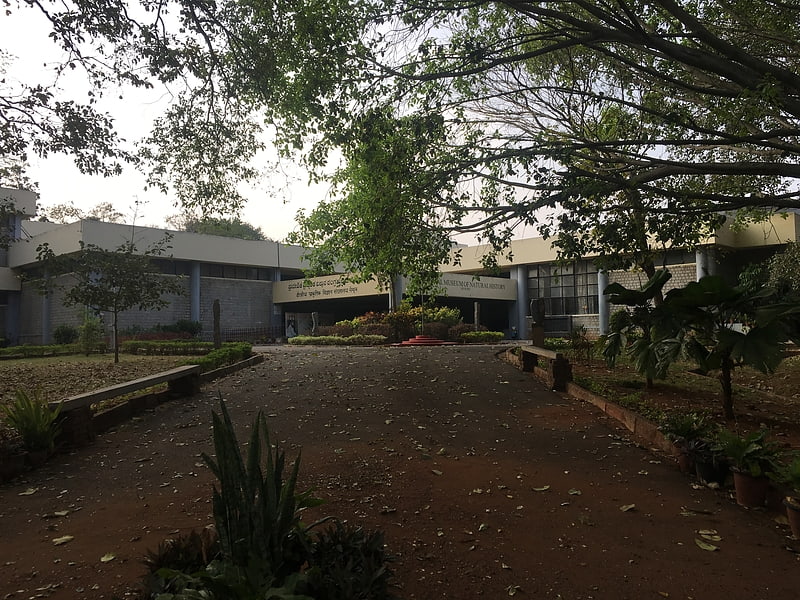
Museum in Mysore, India. The Regional Museum of Natural History at Mysore, is a museum in India with exhibits on plants, animals and geology of the southern region of India.[19]
Address: Siddhartha Nagar, 570011 Mysuru
Jayanagar
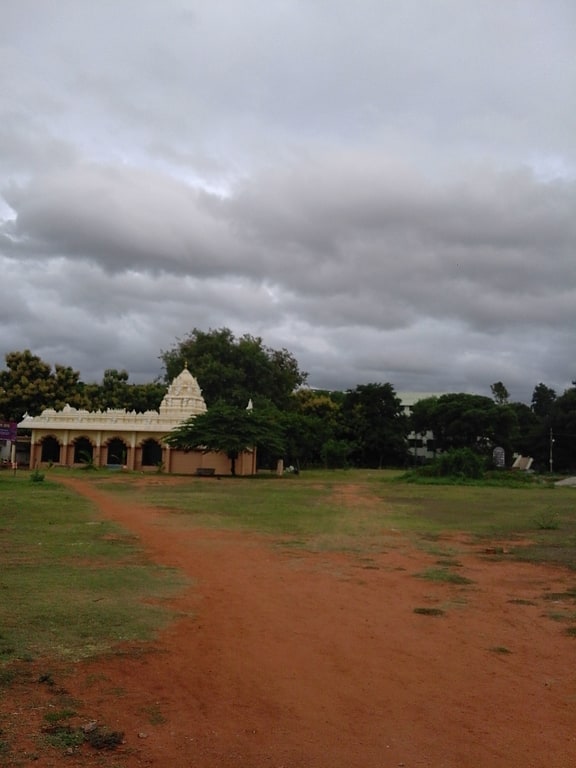
Jayanagar is a residential suburb of Mysore city, Karnataka state, India. It is 4 km from the Mysore city bus stand. Noted landmarks in Jayanagar including Sankethi hostel, Srirama Mandira, ISKCON temple and Bedara Kannappa temple.[20]